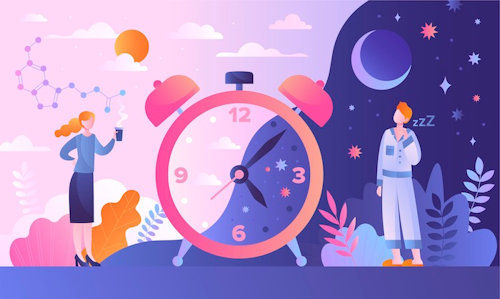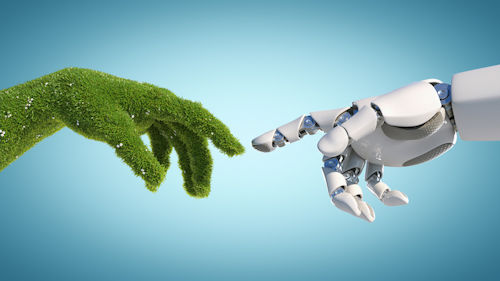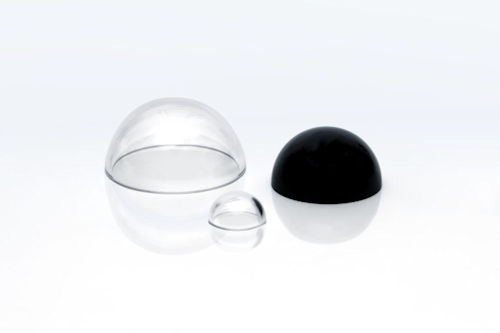Mimicking Mother Nature: Biomimicry and Optical Components
16th Jun 2021There’s so much that we can learn from the natural world that surrounds us, and unbeknownst to some, there are elements within our lives that imitate organic movements and strategies. Here, Knight Optical – the leading supplier of metrology-tested, on-spec optical components –looks at some of the latest developments in biomimicry.

Biomimicry is the process of taking elements found in nature and applying them to real-life situations to solve common problems encountered in human life. Essentially, it’s human-made engineering that’s based around natural elements. Take flight, for instance. Observing the wings of a bird or the fin of a fish has inspired aviation and naval design for generations. For example, back in 2018, Airbus explained how its engineers have considered how an albatross benefits from having an aspect ratio of about 18:1 compared to 9.5 for its A320 product line1.

Shining a Light on Circadian Rhythms
Another great example of biomimicry is circadian lighting, a concept that copies the circadian cycle, which is our body’s internal clock that regulates sleep cycles. Human-made circadian lighting mimics natural light’s path throughout the day and talks to our internal clocks to let us know when we need energy for daytime activities and when we need to wind down and eventually switch off for night-time.
Back in 2014, Korean researchers investigated how white LEDs could optimise circadian rhythms. Their research used a long-wavelength pass Dichroic Filter2, which provides an exemplary illustration of how optical components can be used within circadian lighting applications. Flash forward to 2021, and our awareness of adapting artificial light to mimic natural lighting has resulted in a new rage in lighting design. Linked to this is our smart devices’ abilities to subdue the short-wavelength, High Energy Visible Light (HEV) as we head into the afternoons and evenings.

Analysing Mother Nature
To truly understand Mother Nature and integrate her movements into human-made designs, we must spend time analysing all environments. From the sky to the ground and under the sea, all these localities have inspired and continue to push forward modern-day technology.
Biomimetic Robots
For example, a recent study has investigated the plankton dispersal at sea, which included a biomimetic robot that imitates the organisms’ movements and behaviour when subjected to currents3. Another underwater example is noted in another biomimetic robot study from early 2021, ‘Fish-like three-dimensional swimming with an autonomous, multi-fin, and biomimetic robot’. The ‘Finbot’, as it was named, was designed “for controlled three-dimensional experiments on fish swimming in confined laboratory testbeds” and “combines high degrees of autonomy, manoeuvrability, and biomimicry with [a] miniature size (160cm3)4”.

Cutting-Edge Equipment demands Premium-Quality Components
To study environs and mimic nature effectively, high-tech equipment that has been specially manufactured to endure project-specific elements is required. From drones and other uncrewed aerial vehicles (UAVs) to remotely operated underwater vehicle (ROVs) and high-specification cameras for daytime shooting and night-time infrared-operated footage, all this equipment requires the most advanced optical components to ensure optimum operation.
As well as being specified to monitor the wellbeing of farm and wild animals and creatures, our optical components are also regularly selected for analysis of organic environments for investigative biomimicry-related purposes.
Optics deployed for such uses include:
- Dome Windows –as protective optics against potential internal system damage from animals or the elements. For applications that operate underwater or in similarly challenging environments, we also offer bespoke optical coatings for such optics. These include Anti-Fog, Diamond-Like Carbon (DLC), Oleophobic and Hydrophobic options and more.
Click here to view our full range of optical coatings.

- Infrared (IR) Optics –commonly used to identify wildlife using the IR spectrum in hard-to-see conditions. Available in a range of optic varieties, such as Windows and Lenses, and a variation of IR-suitable substrates, such as Germanium and Sapphire.
Click here to view our portfolio of IR Optics and materials.

- Lenses – used for both wildlife cameras and binoculars. From Plastic to Glass varieties, we supply a vast range of Lenses for viewing and capturing wildlife in its rawest form.
Click here to view our different varieties of Lenses.

From Analysis to Applications
Optical components don’t just play a role in the investigatory element of biomimicry. On frequent occasions, they are used in analytic and prototyping stages through to end applications, such as the aforementioned biomimetic robots and circadian lighting systems.
We’re proud to have worked with designers, engineers and the like on both prototyping and mass production of optics for applications such as those mentioned above. If you’re looking for optical-related advice for your current project, not only do we have experience within the biomimicry market, but our wide-ranging skillset also covers a diverse range of sectors.
Click here to find out more about the industries that we frequently partner with.
About Knight Optical
Here at Knight Optical, we supply a range of optical components for biomimicry applications. Discerning manufacturers and engineers rely on Knight Optical not only for the premium quality of our output and in-house state-of-the-art Metrology Laboratory and QA Department‘s capabilities but because – as well as a range of Stock Optics (available for next-day dispatch) – we also offer a range of sought-after Custom-Made Optical Components.
This year, we’re celebrating 30 years in business. With three decades’ experience under our belt and a whole host of long-standing world-renowned customers on our books, we are proud to have worked on some of the most ground-breaking innovations.
If you are looking for premium-quality, bespoke optical components, please do not hesitate to get in touch with a member of the Technical Sales Team today.
FOOTNOTES
1https://www.airbus.com/newsroom/news/en/2018/01/biomimicry–engineering-in-nature-s-style.html#media-list-image-image-all_ml_0
2https://www.nature.com/articles/lsa201422
3https://www.int-res.com/abstracts/meps/v663/p51-61/
4https://iopscience.iop.org/article/10.1088/1748-3190/abd013/meta